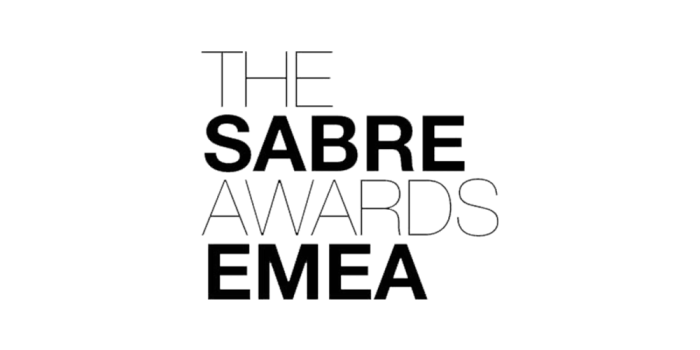
Expert tips from Contura on prepping and using your wood burning stove this autumn/winter.
Along with crisp winter mornings and curling up with a mug of hot chocolate in the evenings, lighting a wood burning stove is intrinsic to winter and brings joy, comfort, and warmth to your home during the colder seasons.
Wood burning stoves generally require little upkeep, but as Phil Wood, UK Country Manager for Contura – Europe’s leading wood burning stove brand – explains, there are some key tips and tricks to ensure your stove runs at maximum efficiency for a better burn, an optimum flame and superior heat output.
Phil says: “Maintaining a wood burning stove is crucial to ensure it continues to work well; that extends to lighting it correctly and burning the right type of wood. When taken care of correctly and used in the right way, you can enjoy your wood burning stove for many years.
“A bright, clean, and steady flame is the goal when using a log burner. With a little TLC you can sit back and enjoy the fire knowing it’s working to its potential, and troubleshooting any problems early is the best way to prevent issues further down the line.
“Get ahead of the cold weather by getting your wood burner in order now.”
Read on for the tips to creating an inviting, safe, and low-emission fire for the whole family to enjoy this winter.
1. Stove SOS
Ensure the chimney and stove are swept professionally at least once a year minimum. There are a few telltale signs of when your chimney needs a professional clean, including: burned wood smells when the fire is not lit; poorly burning fires or excessive smoke; blackened glass.
Book in a maintenance check and sweep with a professional company to check for any issues and to ensure all parts are functioning correctly. Checkatrade lists reputable companies across the UK. Look for HETAS and/or Sweep Safe accreditation.
Ideally the flue and stove should be swept before and after the heating season to prevent tar and soot deposit build up. Book your chimney sweep ahead of time as they get extremely booked up in the winter season.
2. What type of wood?
A wood burner is as it says on the tin: for burning wood only. Do not burn other fuel sources such as coal as these could damage the stove.
With a wide variety of wood types on the market, it can be tricky to know which to go for and which to avoid. Generally, a mixture of species is best. Hardwoods such as ash, beech and birch will burn for the longest and create a bright flame. Avoid ‘soft’ woods such as pines, firs, and cypress, which burn fast and produce a lot of smoke and tar in the chimney.
It’s also important to avoid any wood that has been treated (typically varnish or copper compounds) or painted. Most waste wood like pallets, old furniture or fencing is all treated and should not be burnt in the stove. When possible, allow wood to lie indoors or under cover for at least one day before burning. This will bring the wood up to room temperature and ensure a better burn.
3. Avoid wet wood
Damp logs burn poorly, give off more smoke, and can create more soot and tar deposits that can damage your wood burner. Ensure the wood you purchase has a moisture content of less than 20% – pick kiln-dried for best results.
Look for the Woodsure ‘Ready to Burn’ label as this guarantees a moisture content between 12-20%. It can be tempting to pick up cheaper cuts of wood, but always try to buy the best quality wood you can afford from a recommended supplier, ideally locally sourced or at least UK-based.
4. Light it right
It can be tempting to load up your wood burner to create large fires but remember the motto ‘slow and steady’ when it comes to starting and feeding the fire. Two logs will burn for up to an hour so there is no need to overload the stove.
Start by placing 2-3 split logs in your stove, adding smaller logs and kindling stacked in a crisscross pattern – this is known as the top-down lighting method – and allows for all-important air circulation. One or two natural firelights (never kerosene based) placed in the centre of the kindling will help to get the fire burning.
Old newspaper and wrapping paper can quickly blacken the stove glass and prevent you from seeing the flames clearly, as well as meaning more cleaning, so are best avoided. Open the stove vent as wide as it will go upon lighting the fire and then slowly decrease airflow once the logs have caught and are burning well.
5. Once the fire is lit
Once the flames have died down after the initial lighting period, and the logs begin to glow white it’s time to refuel. Open the stove door slowly to allow the pressure to equalise as this will prevent backdraft (sending smoke back into the room) and add 2-3 new logs.
Two logs should burn for up to an hour on an Ecodesign Ready stove compared to eight logs on an open fire. Don’t burn more than the manufacturer recommends – you can find this info on the product manual.
For more information on Contura, please visit www.contura.eu/en-gb/.
-Ends-
Notes to editors:
- Rooster PR will coordinate comment, interview and profile opportunities for Contura UK Country Manager, Phil Wood.
- The Contura PR team will also arrange visits to the nearest Contura Design Centre dealerships or the Contura showroom in Doncaster to see the product range.
For further press information, pleaae contact:
Anna Nyman | Elsa Findlay | Jo Kendall | Julie Aguilera
Rooster PR
T: +44 (0)20 3440 8930
E: [email protected]
About Contura:
Contura is Europe’s leading manufacturer of wood burning stoves, offering an extensive range of classic and contemporary wood burners; from traditional insert stoves suitable for existing fireplaces, to freestanding statement models made with innovative materials such as soapstone.
Starting at £1,295, Contura stoves are premium yet affordable. Award winning, timeless Swedish design means the products complement or enhance any style of home, whilst also offering outstanding performance, maximum efficiency, practicality and ease of use.
Designed and assembled at the factory located in Markaryd, Sweden, and manufactured to the highest standards, Contura stoves are highly energy efficient, offering powerful convection, superior combustion technology and clean burning systems. Currently, 75% of Contura stoves are DEFRA Clean Air Act exempt and thus approved for use in Smoke Control Areas.
Contura stoves can be purchased through a network of 165 independent retailers nationwide.
Contura is part of the NIBE group, a Swedish manufacturing company producing world class solutions in sustainable energy across Europe, North America, Asia and Australia.
Contura is a founding member of the Stove Industry Alliance (SIA) in the UK.
For more information, please visit www.contura.eu






